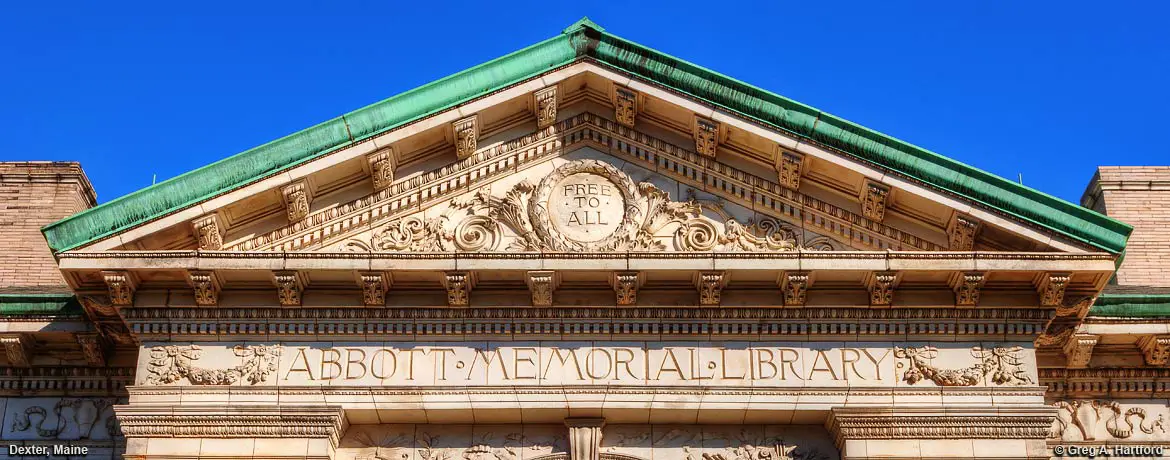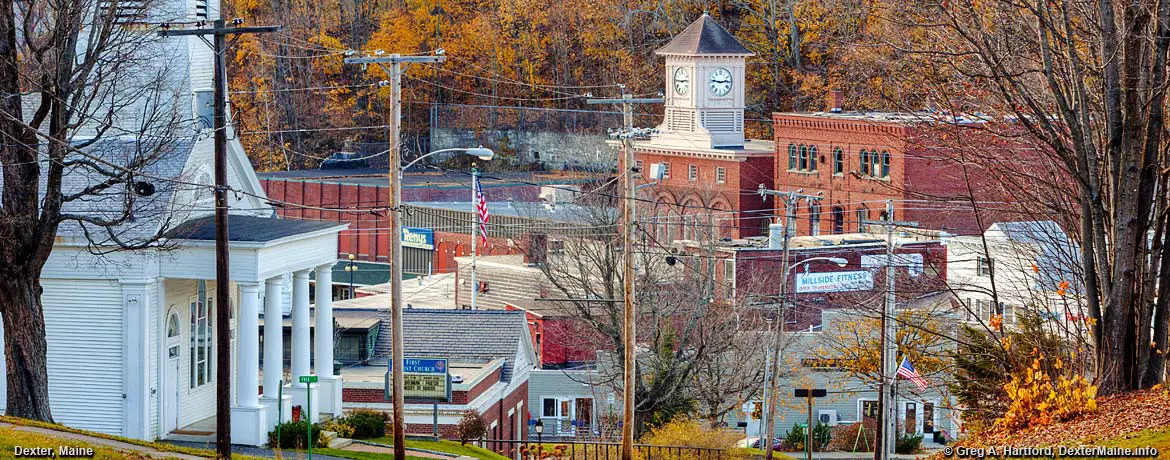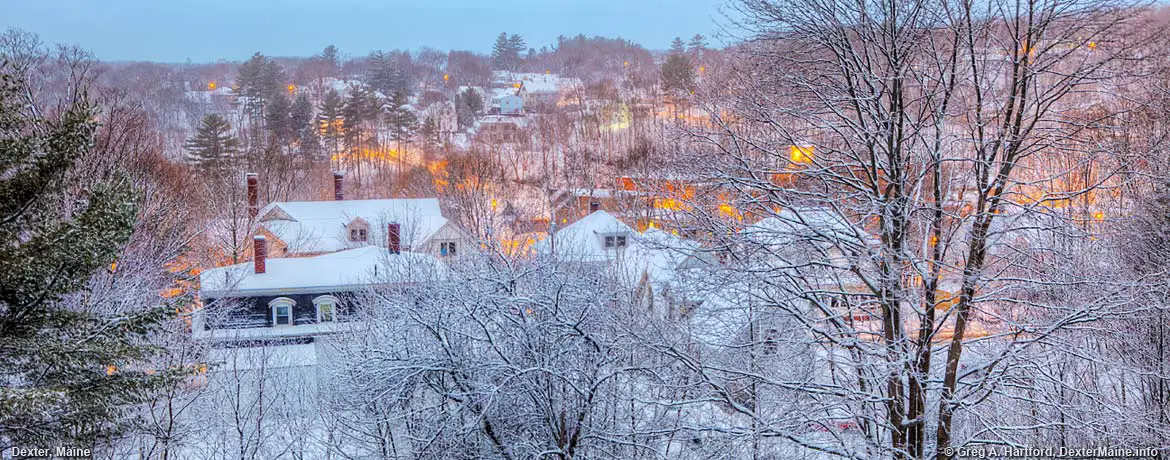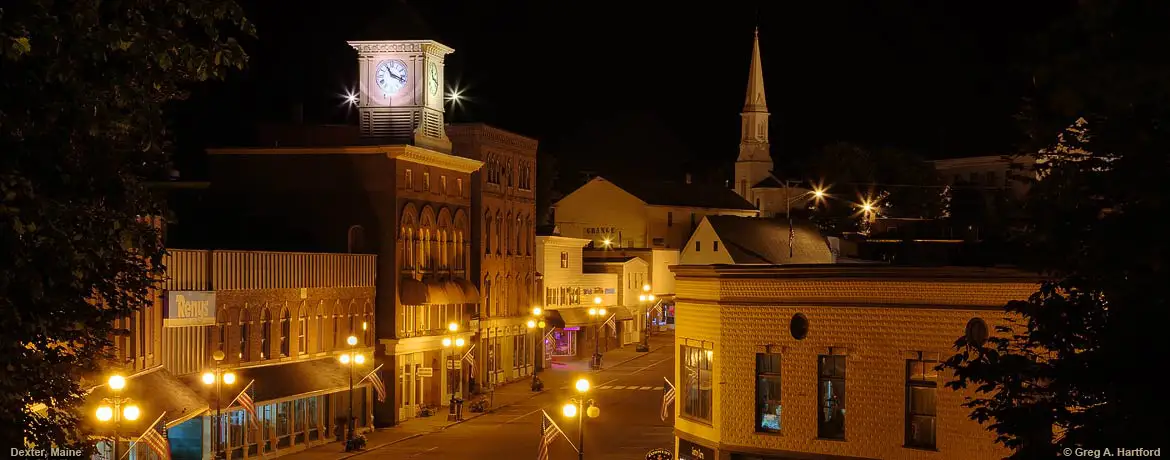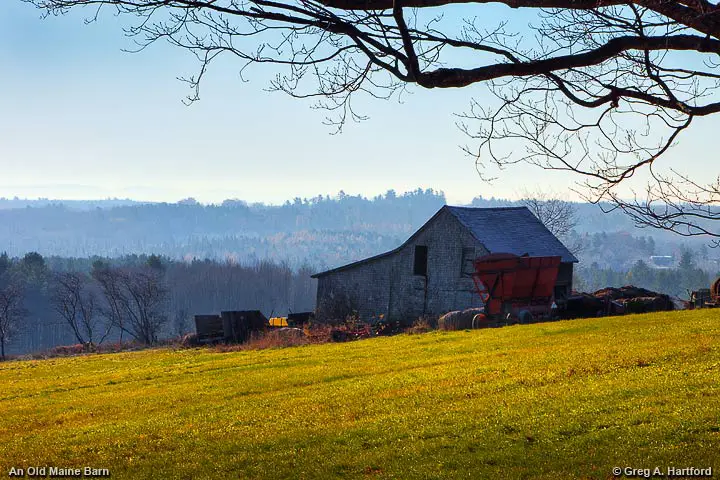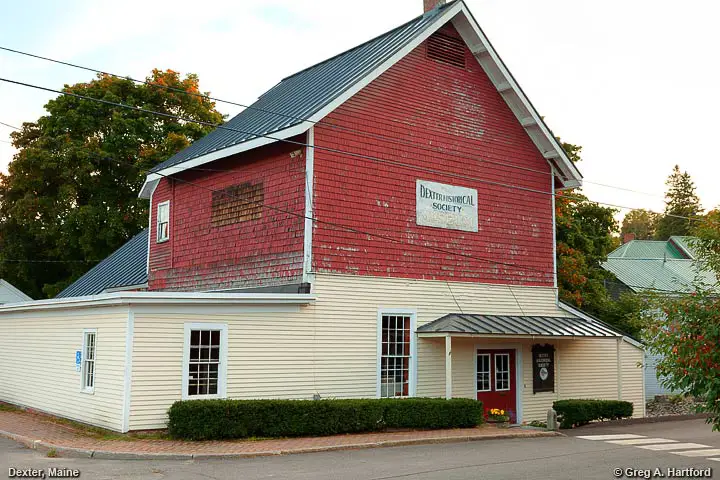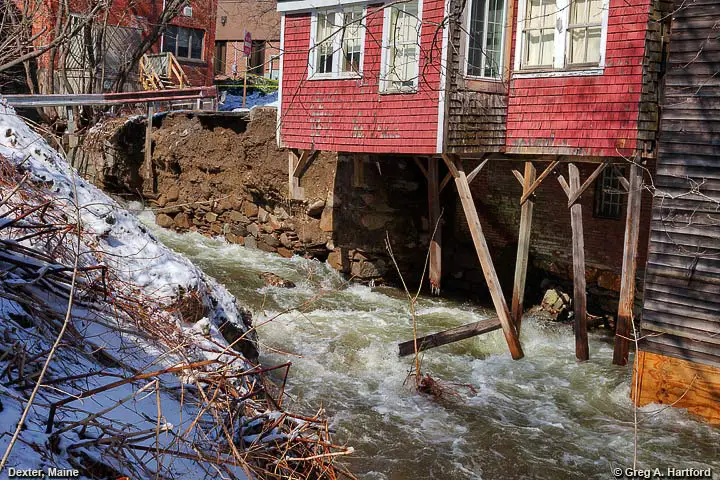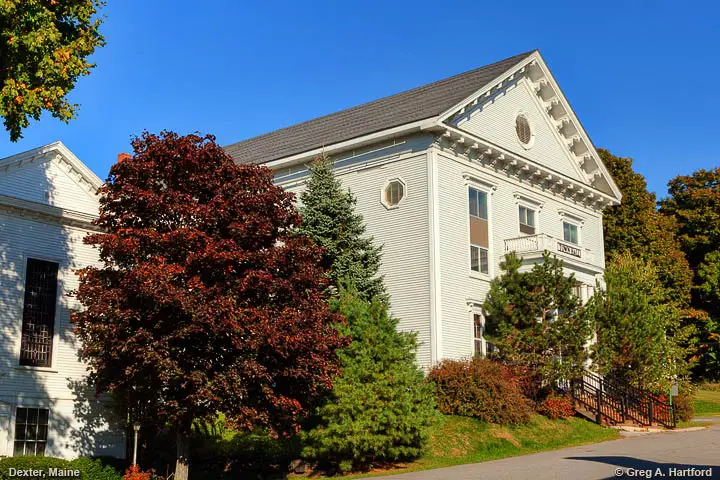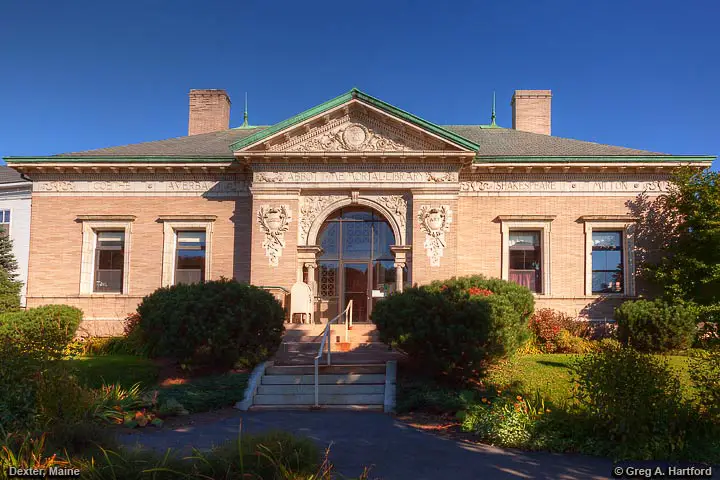Dexter, Maine History
According to “History of Dexter,” prepared by Miss Ella J. Mower and published in 1908, until the year 1792, when the area was surveyed by Mr. Ballard and Mr. Weston for the Commonwealth of Massachusetts, the land “had never been looked upon by the eyes of the white man.” In 1800, Ebenezer Small traveled from a small village about 21 miles to the southwest called Athens (after arriving there from New Hampshire with his family the year before) to locate a suitable spot to clear trees and build a simple cabin. Once this was done, he returned to his family in Athens to organize things for the trip back. Early in the following year, he returned again but this time with his wife and all their possessions such as furniture, clothing, bedding, dishes and provisions on just a hand sled. They blazed a new trail through the forests until they arrived at the location where they began their new life at the 45th Parallel. This was the first full-time settlement in what became Dexter, Maine. On Armistace Day in 1920, a stone tablet was erected at the location of their first home near the base of Zions Hill.
How Dexter Got Its Name
In the early years, Samuel Elkins was sent here to determine the best place for mills and began clearing the land so that the area would be more attractive for further settlements. His chosen location was approximately where Abbott Mill was constructed. The town was incorporated on June 17, 1816, as Dexter within the Commonwealth of Massachusetts in honor of Samuel Dexter, the then current Democratic candidate for Governor of the Commonwealth. Previous to this, the town was simply a plantation called Elkinstown. Unfortunately for Samuel, the honor of having a town named after him, plus having already served as Secretary of State, Secretary of the Treasury, and Secretary of War for the country, was not enough to help him win the election. The newly born town of Dexter, however, did splendidly!
The Sebasticook Advantage
Dexter's location next to the East Branch of the Sebasticook River offered a distinct advantage by providing water power for the construction of mills beginning at the southern end of Lake Wassookeag and continuing south along the river. A grist mill was constructed in 1818 just south of where the current Main Street crosses the river at what was then called Dexter Falls. The original building was replaced in 1854. Today, this same building houses significant historic collections of the Dexter Historical Society. Note: There were 16 different and distinct falls along the river that continued for about 2 miles. These were all known as Dexter Falls. In 1886, each fall supported some business that relied upon its hydro power. In all, there were as many as 25 different businesses, both mills and factories, that were being supported by the river, or specifically, the Dexter Falls. Most all of these were in Dexter.
Museum Has Close Call
On April 16, 2014, the Dexter Historical Society at the old grist mill building had a very close call. Due to the high levels of snow during the winter season, and recent rains, runoff exceeded the river controls and safe capacity levels. This washed out the little bridge next to the building, and several of the building’s supports that were in the river. For a few days, it was not known if the building could be saved, or even if a section of Main Street that was directly over the river would collapse. Eventually the water levels and force subsided and the building was saved. Soon after, a new bridge was constructed. During this same time, there was also a road washout where the Sebasticook River crossed under lower Lincoln Street.
The Dexter Town Hall
In 1886, the Dexter Town Hall (constructed in 1857) was described as “one of the best town-halls in the State” (History of Dexter, Maine from A Gazetteer of the State of Maine by Geo. J. Varney). Prior to that Town Hall, there was a large school building, constructed in 1835-1836 in roughly the same spot. The grammar and primary grades were classed on the first floor while the high school and town meetings were done on the second floor. In March of 1856, a town meeting with about 300 people was taking place on the second floor when, suddenly, the floor began to give way. Before anyone could get to safety, most of the floor fell onto the first floor, causing that floor to give way as well. Both ended up in the basement. The loud crash was heard throughout the town. Several people were seriously injured but no one was killed. This building was auctioned to Amos Abbott & Co. Woolen Mill, divided into three parts and moved to Church Street where it was re-assembled and used for offices and storage until 1975. Today, this same building is home of the Abbott Museum and the headquarters of the Dexter Historical Society.
Abbott Memorial Library
Abbott Memorial Library, centrally located at the intersection of Main Street and Church Street, is in the National Register of Historic Places. Designed by the Boston Architect J. William Beal, it was given to the Town of Dexter, Maine by George A. Abbott as a gift on Christmas Day, December 25, 1894. Today, it houses a book collection of well over 26,000 that includes printed books, audio tapes and DVD’s. Services are provided to residents of Dexter, Cambridge, Exeter, Garland, Ripley, and St. Albans. Public Internet access is also provided and available via 8 computer work stations. Wireless Internet is available. The library subscribes to over 60 magazines as well as 5 newspapers.
Resources
- Dexter Historical Society: (207) 924-5721
P.O. Box 481, Dexter, ME 04930 - Dexter, Maine Town Office: (207) 924-7351
23 Main Street, Dexter, ME 04930
Municipal Website - Abbott Museum & Gift Shop:
12 Church Street, (207) 924-5721
- United States Post Office:
2 Post Office Road, (207) 924-7500 - Abbott Memorial Library
1 Church Street, (207) 924-7292 - Police: Non-emergency: (207) 924-7622
Emergency: Dial 911
Located at 1 Main Street
An Appreciation of History
As I aged, I found myself appreciating the history of places and things much more. It added a certain depth of understanding and insights that was hidden before. Just stop and imagine what it must have been like when the first settlers arrived in what became Dexter, Maine. There were no roads or restaurants along the way. There were not hotels or motels, and no restrooms. The first people followed markings that were placed on trees. There were no weather reports so they could plan or be prepared for what was known. These were rugged minded people with tough skins who knew how to survive in the wilderness. They were filled with a dream, a dream of a new land and a new life.
